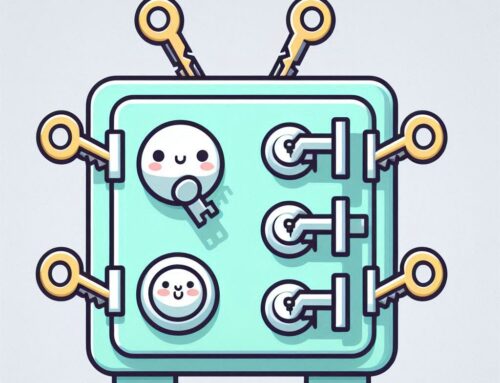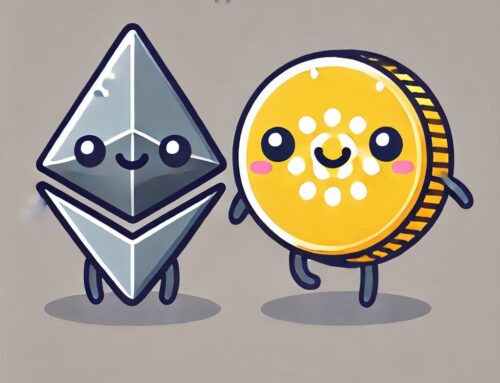Taming the Ouroboros: A Simple Guide to Cardano’s Proof-of-Stake (Because We Need Blockchains That Don’t Melt the Planet!)
Alright, buckle up, because we’re about to decode one of the most important (and slightly intimidating) concepts in the Cardano universe: Ouroboros! No, it’s not a mythical snake that eats its own tail. It’s actually Cardano’s unique Proof-of-Stake (PoS) protocol, and it’s the engine that makes the entire system run safely, securely, and sustainably.
If the blockchain world were a car, Ouroboros would be the engine, carefully making sure that everything works as expected! Now, I know that diving into “consensus mechanisms” might sound about as fun as doing your taxes, but trust me, we’re going to make this as painless and entertaining as possible. So, let’s plunge into the world of Ouroboros.
What Are Consensus Mechanisms, and Why Should You Care? (It’s All About Trust, Baby!)
Before we get into the nitty-gritty details of Ouroboros, let’s quickly recap the concept of consensus mechanisms. In a decentralized network like a blockchain, there’s no central authority to make sure everyone agrees on the state of the ledger. That’s where consensus mechanisms come in, and they ensure that all participants agree on what’s going on.
-
Ensuring Agreement (Like a Digital Handshake!): Consensus mechanisms are algorithms that allow the different participants in a decentralized network to reach agreement on the validity of transactions and the state of the blockchain. It’s like having a set of rules that everyone follows, to make sure that the game is fair, and that there is an agreed-upon way to record the scores.
-
Preventing Cheating (Keeping the Bad Guys Out!): These mechanisms also prevent anyone from cheating by trying to change past transactions, or creating fake coins, so it’s difficult to try and manipulate the system. It’s like having a referee that prevents anyone from breaking the rules, or sneaking in an extra run!
Proof-of-Work (PoW): The Old Guard of Consensus (Heavy on the Electricity!)
Before Proof-of-Stake, there was Proof-of-Work (PoW). It was the original consensus mechanism, famously used by Bitcoin. Think of it like the tried-and-true, but energy-intensive, way of ensuring that everyone agrees on what’s going on.
-
Complex Puzzles (Brainpower Required!): In PoW, network participants (called miners) compete to solve complex mathematical puzzles using powerful computers, which requires lots of energy and specialized hardware. It’s like having a group of mathematicians racing to solve a difficult equation, with the winner getting to add the next chapter to the book.
-
First to Solve Wins (The Glory Goes To…!): The first miner to solve the puzzle gets to add the next block to the blockchain and is rewarded with newly minted coins, which incentivizes good behavior and helps keep the network secure. It’s like having the winner of the race get a trophy, and a lifetime supply of coins!
-
High Energy Consumption (Guzzling Power Like a Monster Truck!): This process requires a lot of computing power, which translates to high energy consumption. It’s like having an engine that’s powerful but also a gas guzzler, which makes it a less than ideal method for many people.
Proof-of-Stake (PoS): The Eco-Friendly Alternative (Sustainable Blocks!)
Proof-of-Stake (PoS) is a more recent and energy-efficient alternative to PoW. Instead of relying on raw computational power, PoS relies on the amount of cryptocurrency that a participant holds (or “stakes”), which is a much more efficient method.
-
Staking Instead of Mining (Let Your Coins Do the Work!): In PoS, network participants (called validators) stake their cryptocurrency, locking up their assets to participate in validating transactions. It’s like having a group of investors putting their money where their mouth is, to secure the network.
-
Random Selection (The Luck of the Draw!): The network randomly selects a validator to propose a new block based on the amount of cryptocurrency they have staked, making the process more fair and accessible. It’s like having a lottery where the more tickets you have, the higher your chances of winning.
-
Low Energy Consumption (Eco-Friendly Blocks!): This process requires significantly less energy compared to PoW, making it more environmentally friendly. It’s like having an engine that’s both efficient and environmentally conscious, which is more sustainable for the planet, and helps the blockchain ecosystem.
Ouroboros: Cardano’s Unique Approach to Proof-of-Stake (Like a Secret Sauce!)
Cardano uses a unique PoS protocol called Ouroboros, which has been mathematically proven to be secure and energy-efficient. It’s not just another run-of-the-mill PoS system; it’s a custom-designed engine that’s optimized for Cardano’s specific goals and needs.
-
Scientific Foundations (Built on Solid Research!): Ouroboros is based on peer-reviewed research and formal methods, ensuring that it is robust, reliable, and scientifically sound. It’s like having a team of scientists designing the engine, ensuring that it’s both efficient and secure.
-
Slot Leaders (The Designated Drivers of the Blockchain!): In Ouroboros, time is divided into slots, and slot leaders are elected based on the amount of ADA they have staked. It’s like having a designated driver who makes sure that everyone gets home safely, while also ensuring that transactions are validated properly.
-
Epochs and Rewards (Time to Get Paid!): Validators are rewarded for their participation in validating transactions, and these rewards are distributed at the end of each epoch, which is a period of time on the network. It’s like getting a paycheck for your contribution to the network.
The Inner Workings of Ouroboros (Let’s Get Technical, But Not Too Technical!)
So how does Ouroboros actually function? Here is an explanation of some of its main processes:
-
Epochs and Slots: In the Ouroboros system, time is organized in epochs, and each epoch is subdivided into fixed slots. These slots are the timeframe in which block leaders are elected and the blocks are created.
-
Slot Leaders: Slot leaders are randomly selected for each slot in an epoch, and they have the right to create the next block in the blockchain. The more ADA you stake, the higher the probability is that you’ll be selected.
-
Stake Pools: In practice, most people delegate their ADA to stake pools that handle the process of running a node, and producing blocks.
-
Security Parameters: The specific selection of parameters ensures the highest level of decentralization, which also ensures the highest level of security on the network.
-
Security Analysis: Ouroboros is one of the few consensus methods that have undergone a formal security analysis.
Advantages of Proof-of-Stake over Proof-of-Work (The Greener, Meaner, Blockchain Machine!)
So, why is Proof-of-Stake better than Proof-of-Work? Here are some key advantages:
-
Energy Efficiency (Saving the Planet, One Block at a Time!): PoS requires significantly less energy compared to PoW, making it more sustainable and environmentally friendly. It’s like choosing an electric car over a gas guzzler, and helping to reduce carbon emissions. This is one of the major advantages of Ouroboros, the consensus protocol used by Cardano.
-
Scalability (Making Room for Everyone!): PoS is more scalable than PoW, allowing the network to handle more transactions and more users without compromising speed or efficiency. It’s like having a larger highway that can handle more traffic without causing congestion, which is one of the reasons why Cardano is so widely used.
-
Decentralization (Power to the People!): PoS can be more decentralized than PoW because it doesn’t require large, expensive mining farms that are often controlled by a small group of individuals. It’s like having a more democratic voting system, where everyone has a chance to participate, and is not limited by the amount of resources they have available.
-
Lower Barrier to Entry (Making it Accessible to All!): PoS has a lower barrier to entry, as users don’t need expensive hardware to participate in validating transactions, just a simple cryptocurrency wallet, which makes it easy for anyone to start staking and earning rewards. It’s like having a game that everyone can play without needing to buy expensive equipment.
The Problems Proof-of-Stake Solves (Fixing What PoW Broke!)
Proof-of-Stake solves some of the biggest problems associated with Proof-of-Work, paving the way for a more sustainable and scalable future for blockchain technology:
-
Environmental Concerns (Saving the Planet, One Block at a Time!): PoS addresses the environmental concerns associated with PoW by significantly reducing energy consumption.
-
Centralization (Distributing the Power!): PoS helps prevent the centralization of power that can happen with PoW, where large mining farms can dominate the network.
-
Scalability Limits (Opening the Floodgates!): PoS enables the network to scale more efficiently, allowing it to handle more transactions and more users without slowing down.
The Takeaway: Ouroboros is More Than Just a Name – It’s the Future of Consensus!
Ouroboros is Cardano’s unique Proof-of-Stake protocol, and it is a key part of the platform’s vision for a sustainable, scalable, and secure blockchain. By choosing PoS over PoW, Cardano is taking a more responsible and environmentally friendly approach to blockchain technology, while also providing an innovative consensus protocol, backed by scientific research and design. It’s not just about building a better blockchain it’s about building a better future for the entire ecosystem.





